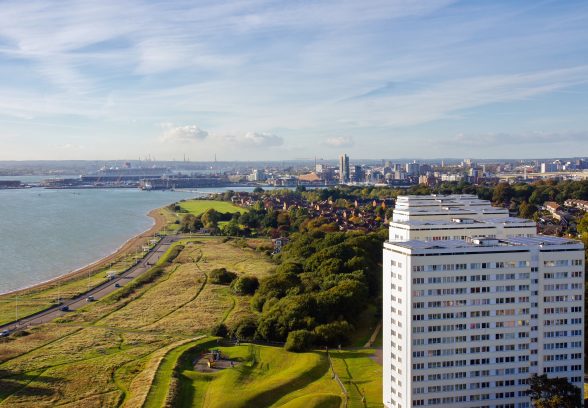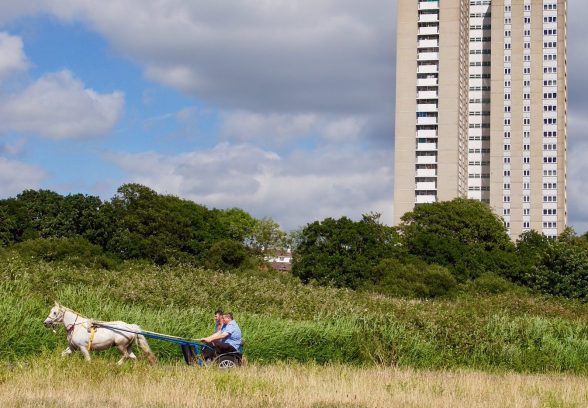This website uses cookies
This website uses cookies to enable it to function properly and to analyse how the website is used. Please click 'Close' to accept and continue using the website.





The Southern Group visited Southampton’s Weston Shore and Netley on 1st July 2017.
A report on the day’s sights by Pauline Mousley.
It was a bright, sunny day for our walk at Weston Shore, Southampton led by Owen Hatherley, journalist and author (focusing on politics, architecture and culture). There was a great turnout including cyclists and a dog.
Owen made the point that despite being considered a sea-faring town, this was one of the few places where you could actually get to the beach, and make a connection to Southampton Water!
We started by looking at the wind shelters built in the 1930’s in a very moderne style. Although the roofs were unfortunately shortened at some point and the glass is missing, they still maintain a glamorous image. We then turned to admire the 5 majestic thirteen-storey towers built in the 1960s under the auspices of L. Berger, the City Architect who had similar towers built elsewhere in the city but not to such great effect.
Alongside stands Canberra Tower of the same period, but following a different design by Ryder and Yates. In front there is a simple but interesting playground designed by Kate MacKintosh who is known best for her work at Dawson’s Heights, East Dulwich. This is part of the large amount of green space that surrounds the very dense housing that sets it off wonderfully. Unfortunately not much infrastructure by way of shops, pubs, and other services were included in the scheme but even today the flats remain popular in part due to the large size of each apartment.
We then walked/cycled along the shore to Netley for a very welcome refreshment stop where we could admire the 1930/40s wooden tea rooms including the lovely Empire Hall. It is a grade II listed building by K J Lindy, and was originally a YMCA for use of recovering patients at the nearby Military Hospital. The timber used was donated by the Timbertrade Federation to illustrate types of wood from all over the British Empire.
Owen also explained the demise of the Military Hospital on the site and creation of the Royal Victoria Country Park which opened in 1970.
Our final stop was to view Fawley Power Station across Southampton Water. This was an oil-fired power station built in the 70’s designed by Farmer and Dark which has now been decommissioned. Pevsner refers to it as ‘the best of the new English power stations’. There are plans to build 1000 houses on the site and we can only hope that the developers will include, at the very least, the wonderful Control Room (featured in many films) and chimney in this ambitious scheme.

Become a C20 member today and help save our modern design heritage.